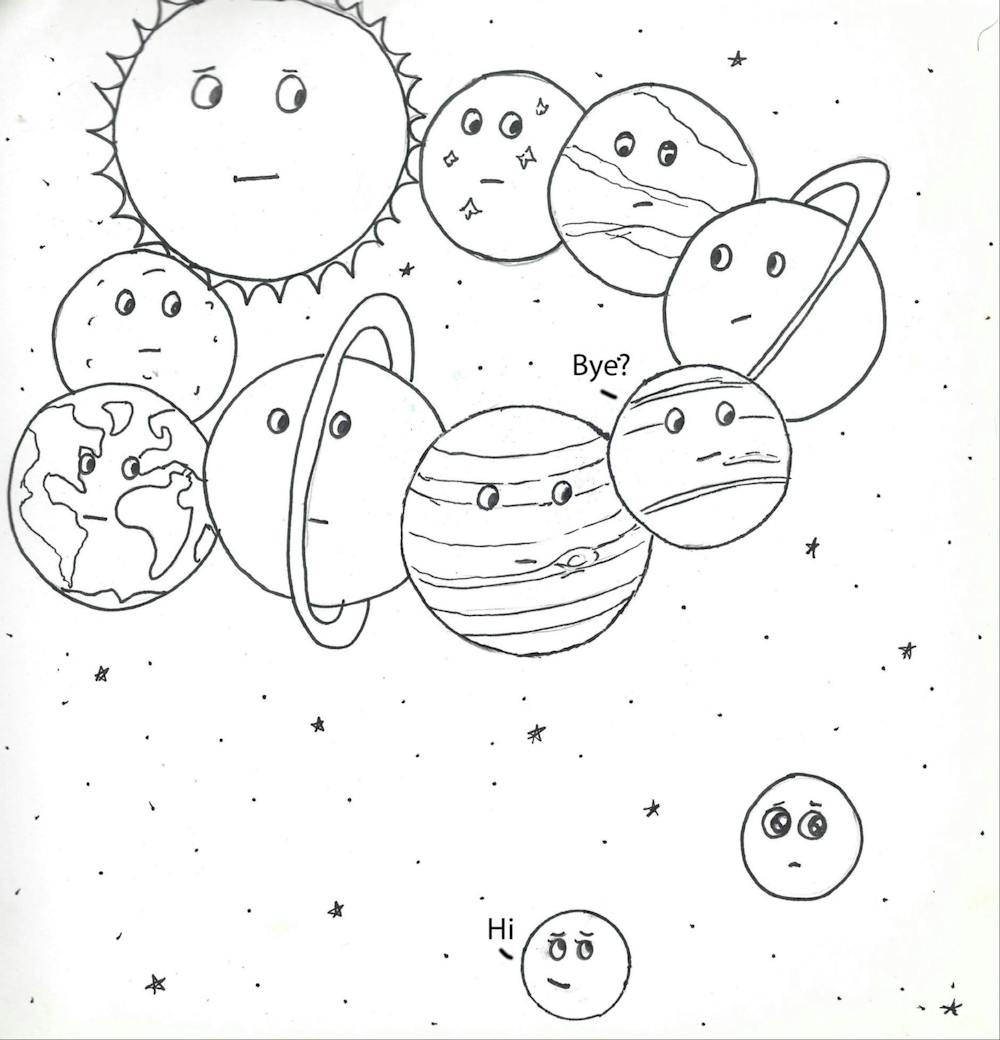Many remember when Pluto, the dwarf planet recognized by its heart-shaped feature, was demoted from its planetary status.
On Aug. 24, 2006, the International Astronomical Union voted to downgrade Pluto to a dwarf planet after it was discovered to be much smaller than originally thought, according to History. Now, Aug. 24 is recognized as Pluto Demoted Day.
Despite Pluto’s demotion, the state of New Mexico recognizes Pluto’s existence as a planet.
Former Democratic Rep. Joni Marie Gutierrez introduced a joint memorial in 2007 that declared Pluto a planet, according to House Joint Memorial 54. The legislation passed, but a year earlier, the IAU’s decision to demote Pluto sparked scientific and cultural controversies.
A planet is a celestial body that orbits around the sun and has the mass to have enough gravity to both maintain a nearly round shape and clear away any nearby objects of a similar size, according to NASA and the IAU.
Louis Scuderi, a professor of earth and planetary sciences at the University of New Mexico, said that it makes sense why Pluto is not considered a planet.
“In the definition of a planet, as approved by the IAU, a planet must clear other objects in its neighborhood. And (Pluto) fails on that particular point,” Scuderi said.
Darcy Barron, assistant professor of physics and astronomy at UNM, agreed that Pluto’s demotion made sense but said it also helped Pluto get more attention.
“I think it's still a planet. It's just a new kind of planet — this dwarf planet — so I think it all still makes sense,” Barron said.
The IAU describes dwarf planets as objects in orbit around the sun that have enough mass to maintain a nearly round shape, but cannot clear debris in their orbit.
“There's many dwarf planets; they're so small that we know that we haven't found most of them. Pluto is just one of many things hanging out there in the same orbit, where other planets have to be the only thing there,” Barron said.
Get content from The Daily Lobo delivered to your inbox
The discovery of the dwarf planet Eris triggered Pluto’s demotion, according to Barron.
Astronomers discovered Eris, named after the Greek goddess of discord and strife, on Jan. 5, 2005, according to NASA.
Eris was initially thought to have been the 10th planet, but its small size deemed it not one. It also prompted the IAU to reconsider the definition of a planet, whereafter it demoted Pluto, according to Space.
“So the question then becomes, are all these planets? If you took a really liberal definition of a planet, you have to include all these other objects out there beyond Pluto or in the same area as Pluto in the Kuiper Belt. So you could either have eight planets by demoting Pluto, or hundreds of additional planets by keeping Pluto a planet … It sort of had it coming,” Scuderi said.
Unlike other planets that were discovered in the 17th, 18th and 19th centuries, Pluto was discovered during a time when modern media and pop culture was emerging.
Clyde Tombaugh discovered Pluto in 1930 at the Lowell Observatory in Flagstaff, Arizona. Tombaugh’s job at the observatory was to take pictures of the sky and study them to find unidentified moving light that may be a planet, according to NASA.
“It's sort of this neat historical artifact. They thought they were looking for something really big, and it just happens that Pluto is especially bright for how small it is,” Barron said.
Born in Illinois, Tombaugh spent much of his career in New Mexico and helped establish the astronomy program at New Mexico State University, according to its website.
“New Horizons satellite passed by Pluto about 10 years ago, and that's where we got all the nice pictures of it, including the heart-shaped feature on Pluto. Pluto is still special, even if it's not a full planet,” Barron said.
Leila Chapa is a freelance reporter for the Daily Lobo. She can be reached at news@dailylobo.com or on X @lchapa06






